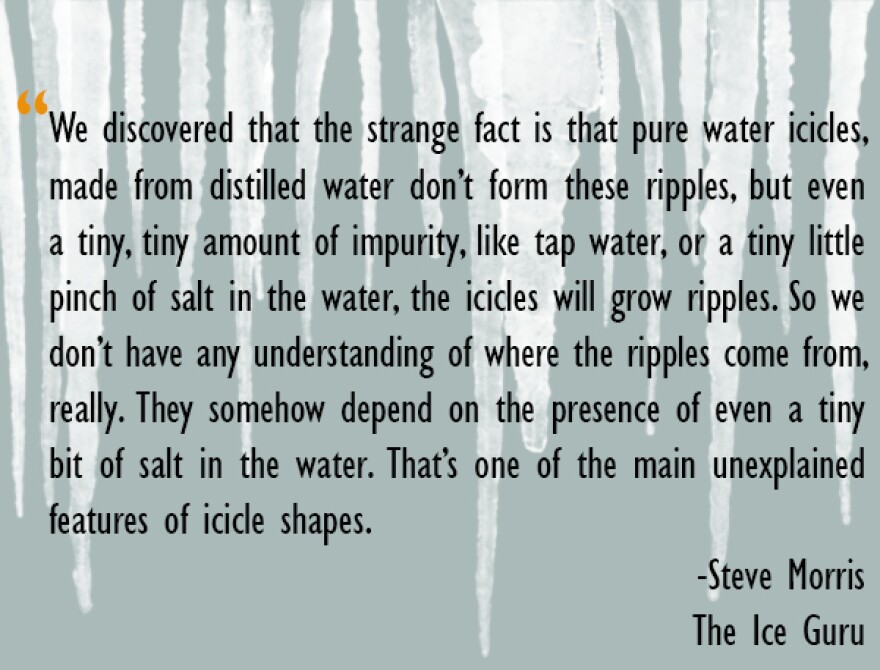Think about the shape of an icicle: it’s pointy at the end and wider at the base. But why are they that shape? The key thing to remember when talking about icicles is that icicles are long and skinny because the tip is growing faster than the base. And there are 3 reasons for why that is:
Reason #1: It's dripping.
Every drip, as it travels down the icicle, carries heat away. This is because water is an incredible vehicle for conducting heat. It has the highest specific heat of any material we know of.
Reason #2: Heat tends to rise.
The heat that’s given off by this water rises up and creates a pocket of warm air that’s thicker towards the top of the icicle and very thin towards the tip. So the water that’s dripping down near the base or top of the icicle, gets insulated by this pocket of warm air. And as you get further down the icicle there’s less and less protection from the warm air and it’s more likely that the water will freeze.
Reason #3: The base is sheltered.
So if the wind is blowing, the pointy end of the icicle is exposed and is losing heat more quickly than the base. At the base of the icicle, the water is less likely to freeze, whereas at the tip it’s freezing more quickly and that’s what creates the long pointy shape.
Next time you see an icicle, grab a ruler, hold it up to the icicle and count how often the ripples appear. You'll quickly discover that there’s a ripple every centimeter. It’s always that way, and scientists have no idea why.

So, how do you get rid of ice on your roof? There are a few options that circulate every winter but one way is to fill a sock or some panty hose with calcium chloride. You don’t want to use real salt, because that will damage the shingles. Stick the filled sock in the gutters or on the ice at the edge of the roof and the calcium chloride will eventually melt the ice away.
If you decide to physically remove them--because c’mon, smashing icicles is pretty satisfying!--you want to be cautious so you don’t damage your roof.
Today's show has a primer on icicles w/@SamEB_NHPR @Verginger @TaylorQuimby1 @loganpass. Bonus video of smashing ice! pic.twitter.com/VMtGUCfpmg
— Second Greatest Show On Earth (@secondgreatest) March 12, 2015













